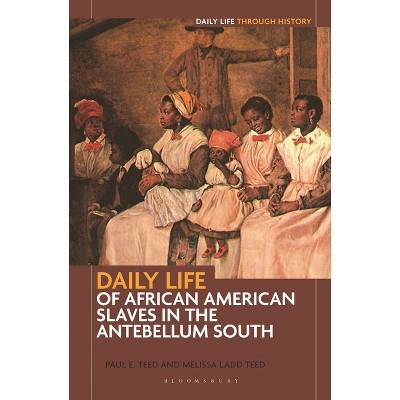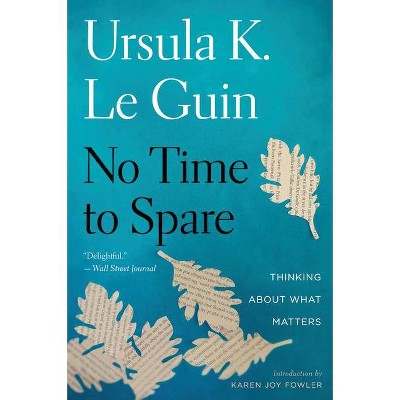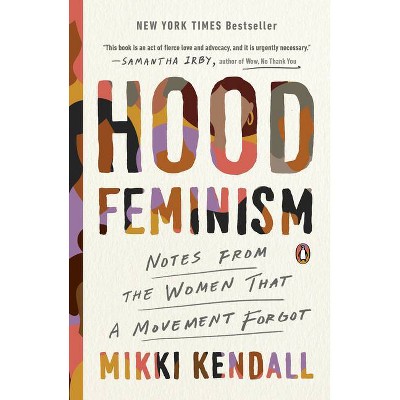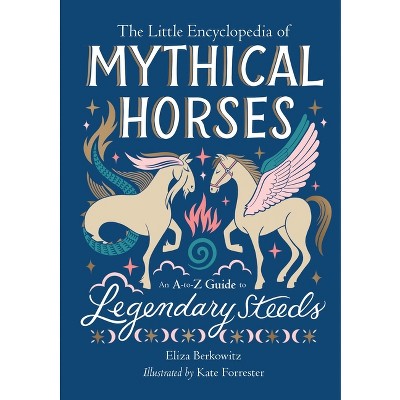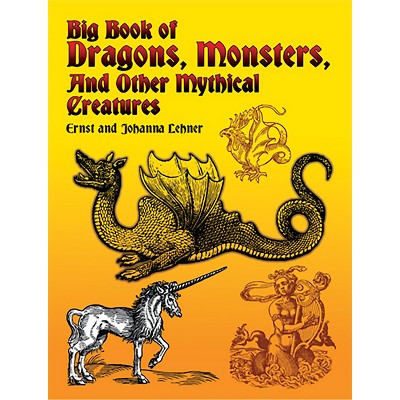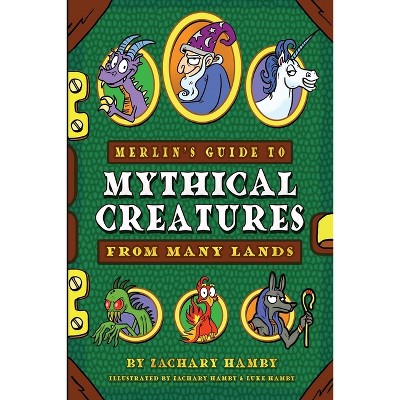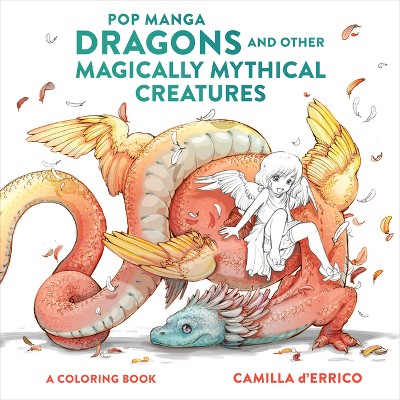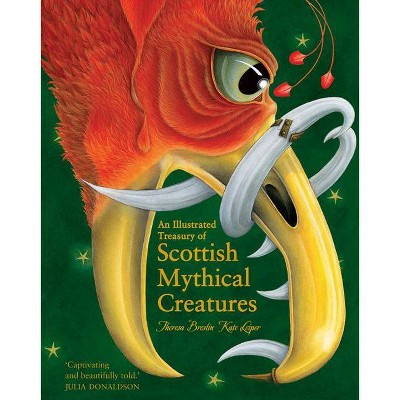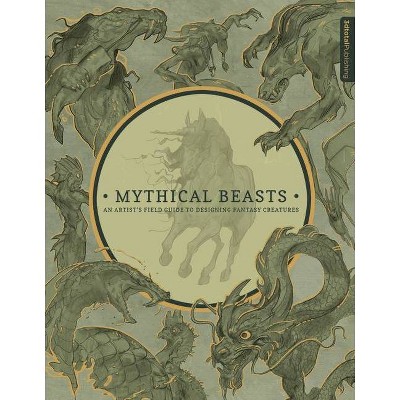Sponsored

Mythical and Fabulous Creatures - by Malcolm South (Hardcover)
In Stock
Sponsored
About this item
Highlights
- This serious, scholarly treatment of 20 imaginary beings, from dragon and phoenix to giants and fairies, discusses the origin of each as an idea, its symbolism and lore, and its appearances in art, literature, or film. . . .
- About the Author: MALCOLM SOUTH is Professor of English at East Carolina University.
- 422 Pages
- Social Science, Folklore & Mythology
Description
About the Book
This serious, scholarly treatment of 20 imaginary beings, from dragon and phoenix to giants and fairies, discusses the origin of each as an idea, its symbolism and lore, and its appearances in art, literature, or film. . . . Extensive bibliographies follow the generally ambitious and erudite essays while a final catch-all article and selective bibliography cover still more ground, at a gallop. . . . [There] are a number of thoughtful and well-written interpretive investigations into the nature and history of some persistent types. Entries on the Basilisk, Harpies, Medusa, and the Sphinx are particularly fine: here one feels that the mystery and power of these imaginative creatures is not vitiated by scholarly taxidermy. Library Journal
[This] book provides thorough documentation of the best-known creatures of fantasy with a breadth of coverage that is both impressive and delightful. Recommended for all libraries supporting research in mythology, fantasy, folklore, or popular culture. Choice
Book Synopsis
This serious, scholarly treatment of 20 imaginary beings, from dragon and phoenix to giants and fairies, discusses the origin of each as an idea, its symbolism and lore, and its appearances in art, literature, or film. . . . Extensive bibliographies follow the generally ambitious and erudite essays while a final catch-all article and selective bibliography cover still more ground, at a gallop. . . . [There] are a number of thoughtful and well-written interpretive investigations into the nature and history of some persistent types. Entries on the Basilisk, Harpies, Medusa, and the Sphinx are particularly fine: here one feels that the mystery and power of these imaginative creatures is not vitiated by scholarly taxidermy. Library Journal
[This] book provides thorough documentation of the best-known creatures of fantasy with a breadth of coverage that is both impressive and delightful. Recommended for all libraries supporting research in mythology, fantasy, folklore, or popular culture. ChoiceReview Quotes
"Essays by 18 contributors about 20 imaginary creatures provide information on their probable origins, symbolism, legends, and appearances in history, literature, and art. All the creatures, including those mentioned in a catchall essay for lesser-known beings, are accessible through a meticulous index, which also includes literary references in the text. Excellent bibliographies follow each essay, and a glossary and a taxonomy of creatures are appended. Most of the material is drawn from Indo-European sources, with occasional references to the Far East, North America, and Africa. Literature' begins with the most ancient texts and continues to current fantasy novels, while art' includes painting, sculpture, jewelry, movies, and T.V. This makes for wonderfully serendipitous bibliographies ... [this] book provides thorough documentation of the best-known creatures of fantasy with a breadth of coverage that is both impressive and delightful. Recommended for all libraries supporting research in mythology, fantasy, folklore, or popular culture."-Choice
"This serious, scholarly treatment of 20 imaginary beings, from dragon and phoenix to giants and fairies, discusses the origin of each as an idea, its symbolism and lore, and its appearances in art, literature, or film.... Extensive bibliographies follow the generally ambitious and erudite essays, while a final catch-all article and selective bibliography cover still more ground, at a gallop.... [There] are a number of thoughtful and well-written interpretive investigations into the nature and history of some persistent types. Entries on the Basilisk, Harpies, Medusa, and the Sphinx are particularly fine: here one feels that the mystery and power of these imaginative creations is not vitiated by scholary taxidermy."-Library Journal
?Essays by 18 contributors about 20 imaginary creatures provide information on their probable origins, symbolism, legends, and appearances in history, literature, and art. All the creatures, including those mentioned in a catchall essay for lesser-known beings, are accessible through a meticulous index, which also includes literary references in the text. Excellent bibliographies follow each essay, and a glossary and a taxonomy of creatures are appended. Most of the material is drawn from Indo-European sources, with occasional references to the Far East, North America, and Africa. Literature' begins with the most ancient texts and continues to current fantasy novels, while art' includes painting, sculpture, jewelry, movies, and T.V. This makes for wonderfully serendipitous bibliographies ... [this] book provides thorough documentation of the best-known creatures of fantasy with a breadth of coverage that is both impressive and delightful. Recommended for all libraries supporting research in mythology, fantasy, folklore, or popular culture.?-Choice
?This serious, scholarly treatment of 20 imaginary beings, from dragon and phoenix to giants and fairies, discusses the origin of each as an idea, its symbolism and lore, and its appearances in art, literature, or film.... Extensive bibliographies follow the generally ambitious and erudite essays, while a final catch-all article and selective bibliography cover still more ground, at a gallop.... [There] are a number of thoughtful and well-written interpretive investigations into the nature and history of some persistent types. Entries on the Basilisk, Harpies, Medusa, and the Sphinx are particularly fine: here one feels that the mystery and power of these imaginative creations is not vitiated by scholary taxidermy.?-Library Journal
About the Author
MALCOLM SOUTH is Professor of English at East Carolina University.Shipping details
Return details
Frequently bought together
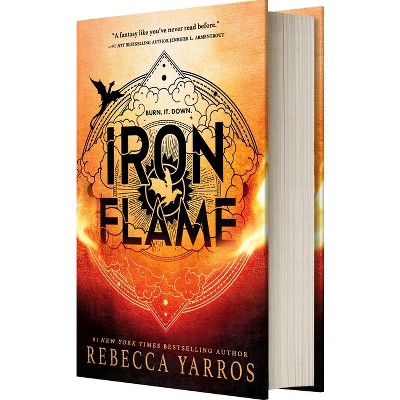
Trending Non-Fiction




